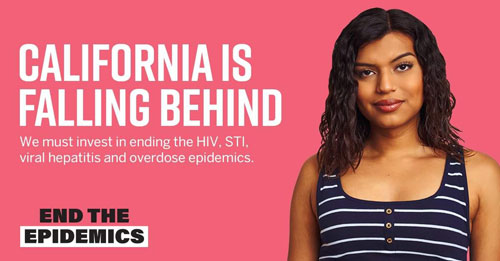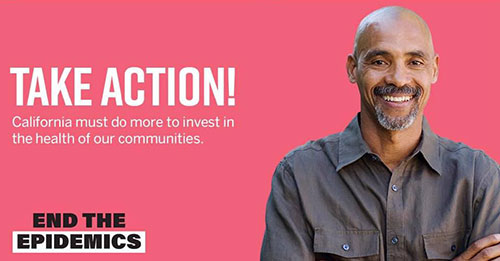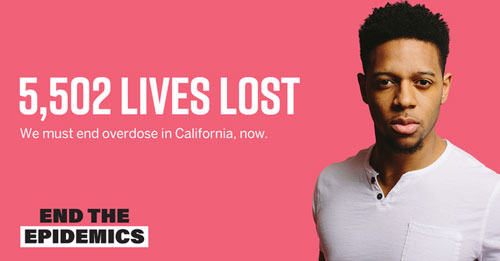THE EPIDEMICS

HIV
Despite the availability of highly effective prevention and treatment tools, HIV continues to be a significant public health challenge in California. Roughly 4,400 people were newly diagnosed with HIV in 2019 – a modest 13.3% decline since 2015. Additionally, while the overall number of new HIV diagnoses has declined, significant inequities remain. Black and Latinx gay and bisexual men, Black cisgender women, transgender women and youth continue to be the populations most impacted by HIV in California. Black and Latinx Californians are diagnosed with HIV at rates roughly 5 and 2 times higher, respectively, than those of whites.


STIs
Over the past decade, California has experienced alarming increases in new cases of STIs – particularly syphilis and congenital syphilis. There were 28,846 reported cases of syphilis in 2019, a 349% increase since 2009. Cases of congenital syphilis, which occur when syphilis is transmitted from a pregnant person to their child during pregnancy, increased 631% over the same period. Although the STI public health crisis is affecting communities across the state, California youth, communities of color, and LGBTQ+ populations continue to be disproportionately impacted.


Hepatitis C
The hepatitis C (HCV) epidemic continues to grow at an alarming rate despite groundbreaking treatments that can cure the disease in 8 to 12 weeks. The CDC recently reported that the annual rate of HCV cases tripled from 2009-2018, with the highest rates among young adults driven primarily by injection drug use. HCV is a leading cause of liver disease and liver cancer in the United States. Since 2013, HCV-related deaths have outnumbered those due to all other 60 nationally notifiable infectious diseases combined. American Indian/Alaska Native and Black Californians are disproportionately impacted by HCV.


Hepatitis B
Hepatitis B (HBV) is a major source of preventable morbidity and mortality in California. An estimated 300,000 Californians are chronically infected with HBV and two-thirds are unaware of their status. According to a 2018 study, an estimated 88% of those with chronic HBV are Asian or Pacific Islander. Roughly 25% of people with HBV are expected to suffer from deadly liver disease or liver cancer. Fortunately, recent advances have provided many of the necessary tools to eliminate HBV, including early screening and vaccination as well as early disease management.


Drug Overdose
Over the course of the COVID-19 pandemic, the already alarming rate of drug overdose significantly worsened. California reported one of the highest preliminary increases in the nation, with overdose deaths up 45% since June 2020. Unlike in the early years of the overdose epidemic, when deaths were largely among white Americans in rural and suburban areas, the current crisis is affecting Black Americans and American Indian/Alaska Natives disproportionately. Most overdose deaths are now linked to fentanyl and/or methamphetamine.

